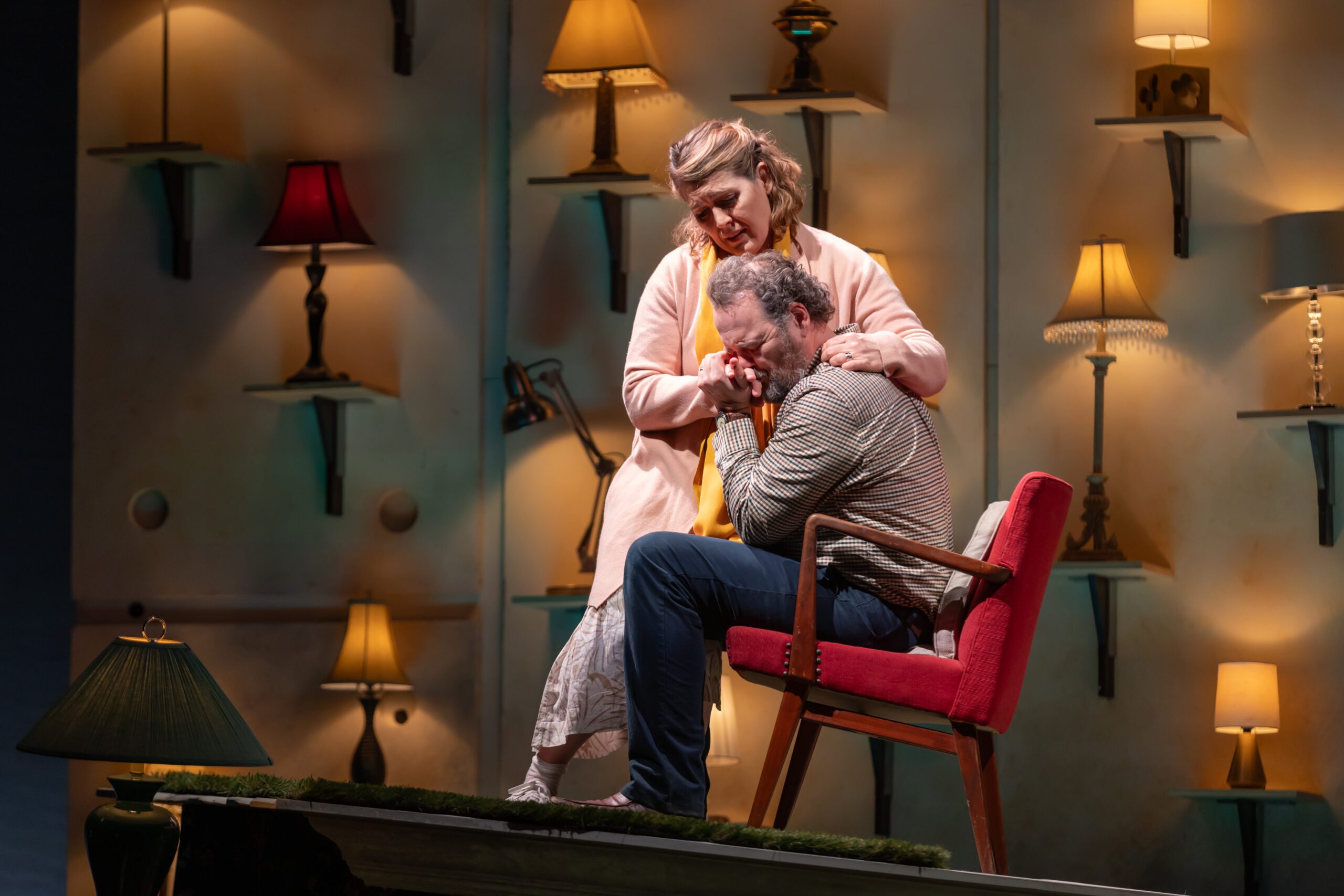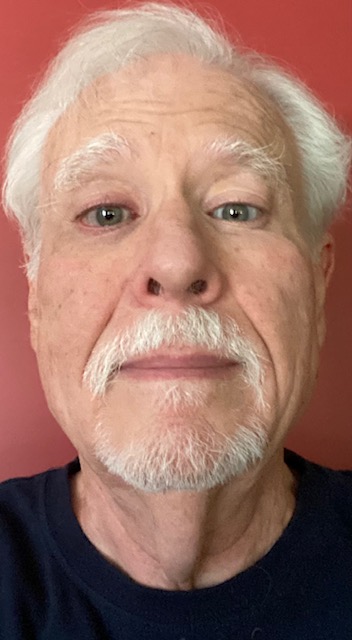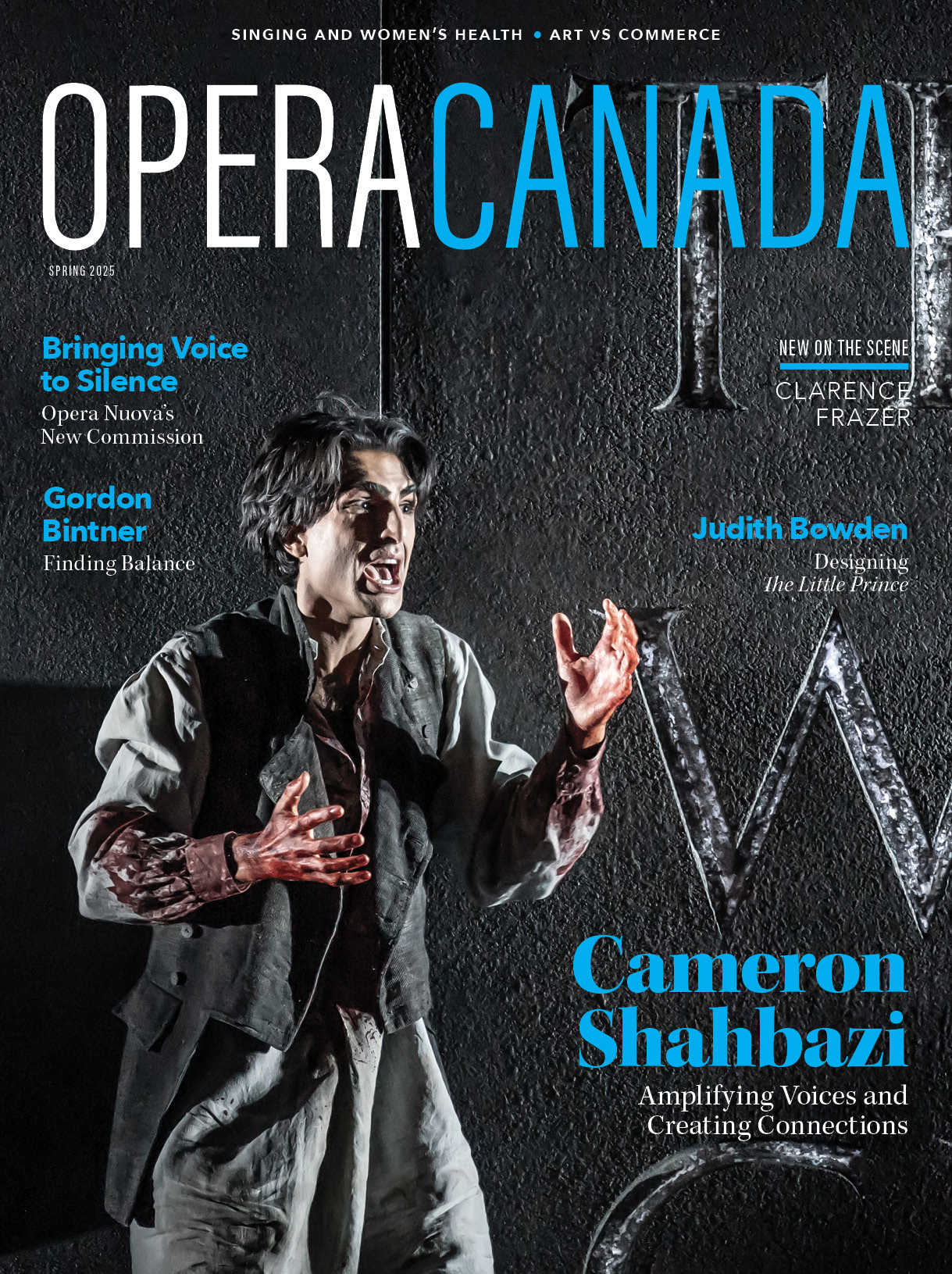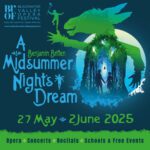Edmonton Opera billed its second show of its 61st season as Bluebeard’s Castle, Béla Bartók and librettist Béla Balázs’s early 19th-century macabre tale of romantic doom, possibly even serial murder. And it was Bluebeard’s Castle, in a way. Although the ways in which it wasn’t were striking.
Bartók’s score calls for nearly one hundred players. This adaptation by British composer/arranger Stephen Higgins featured seven players, one on a part, without any percussion, a significant absence. No trumpets or trombones, one violin, one viola, one cello, two differently pitched clarinets, a French horn and a piano. There are many quiet, tender moments in the original, but moments of crisis or the panoramic majesty of Bluebeard’s kingdom behind the fifth door, for instance, obviously didn’t resound in the Jubilee Auditorium with such small forces.
Nor, I suppose, did this repurposing of Balázs’s grim telling of the legend require elevated orchestral forces, given the quotidian plot of this modest reimagining. Although the two main characters are named Bluebeard and Judith, this Bluebeard is no mysterious antique nobleman, and his wife, Judith, is not a woman decades younger than him, too naïve and inquisitive for her own good. Bluebeard, here, is an elderly man contending with the complexities of caring for a partner suffering with dementia. Judith has come to his “castle” – a man’s home is one, we’ve been told – presumably from a long-term care centre. Both versions begin with the woman being asked if she wants to stay. What worries them, of course, is completely different. One is obsessed with her husband’s secrets; the other has lost her grip on time and memory. Her disorientation was palpable.
The adage “a man’s home is his castle” is but one of several tenuous metaphors in the adaptation by director Daisy Evans. There is no dark, dank actual castle, as there is in the original. Judith sees real blood in the Bartók’s. Judith here mentions blood in the same way, but blood really has no place in this version. Given how mental disturbance is at the core of this story, though, I suppose any fantastical notion coming from a demented woman could be rationalized.
Set and costume designer Adrian Linford put the couple in a slightly off-kilter, barely decorated living space with one low-budget easy chair and a back wall covered in shaded lamps. Assorted table and floor lamps also covered a couple of spots to the left and right of the main playing space. These lamps, depending on whether the mood of the story had gone dark or had brightened with moments of Judith’s lucidity, would illuminate or dim. The symbol of light and darkness are central to the original flow of the original libretto, only there it is both symbolic and literal. Visually, without knowing what the lamps symbolized, their placement was somewhat perplexing, until director Daisy Evans explained them in an after-show panel discussion.

Photo Credit: Nanc Price
Edmonton Opera’s Bluebeard’s Castle presents the story of a man helping his partner who is suffering from dementia
In this production, a simple suitcase replaced the seven great doors of the original, and in it were garments that represented the couple’s stages of marriage. The opening of the case and the removal of each garment brought to the stage speechless characters who represented Judith as a young woman, a new wife, happy times at Christmas, a grieving mother, and ultimately, her own place in their shared history and her shaky memory of her life with Bluebeard.
In the original, behind door seven, his previous four wives represent the four periods of a day from dawn to midnight. In this telling, Judith is the one and only wife, seen through her memories, symbolically buried in the trunk. The memory metaphor worked at the appropriate scale for what this story was about, and Evans, who has staged this show many times, enlivened the relatively static two-hander with crisp, efficient scenes.
Bluebeard was sung by esteemed Canadian baritone Russell Braun, who was called upon to tap all his bassiest resources for this role, which called for equal measures of melancholy, exasperation and shattering resignation. The piece is essentially a dialogue, and so neither singer had much scope to show all their considerable chops. Braun, as the anguished husband, did a good job of conveying a fortitude that would be ultimately thankless.
Judith was sung by the equally accomplished Canadian mezzo-soprano Krisztina Szabó. She sang the role with a fine balance of tender vulnerability and, in the extreme, downright paranoid toward the end. She captured the oscillating mental states of present awareness and deep confusion believably. Szabó embodied the trapped dementia patient who has lost the capacity to assess her own needs poignantly. Given the theme of this project to show, in art, the merciless path of irreparable mental decay, Szabó showed the tragic dissolution resoundingly.
Theatre of Sound has an ethos similar to Edmonton Opera’s artistic director, Joel Ivany’s, which no doubt piqued his interest in mounting the show. Besides being economic (the company’s usual pit band, the Edmonton Symphony, was sidelined), the artistic merit of this smaller approach to opera was theatrically engaging and musically coherent.
It wasn’t THE Bluebeard’s Castle; it was its own special thing, with an interesting topical and contemporary slant.

Photo Credit: Nanc Price
The company of Bluebeard’s Castle at Edmonton Opera
Opera Canada depends on the generous contributions of its supporters to bring readers outstanding, in-depth coverage of opera in Canada and beyond. Please consider subscribing or donating today.











